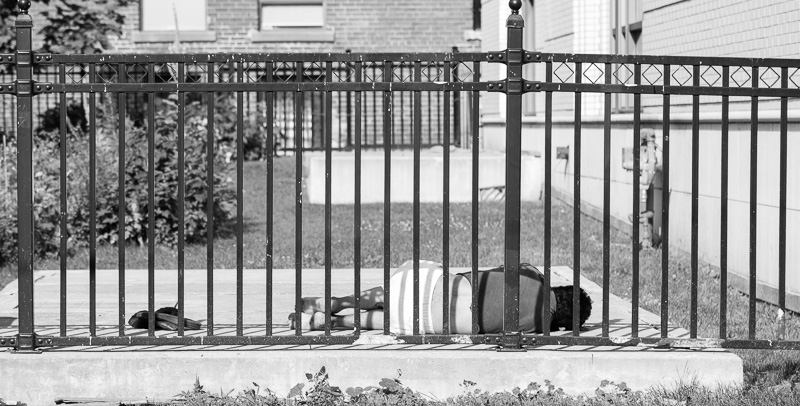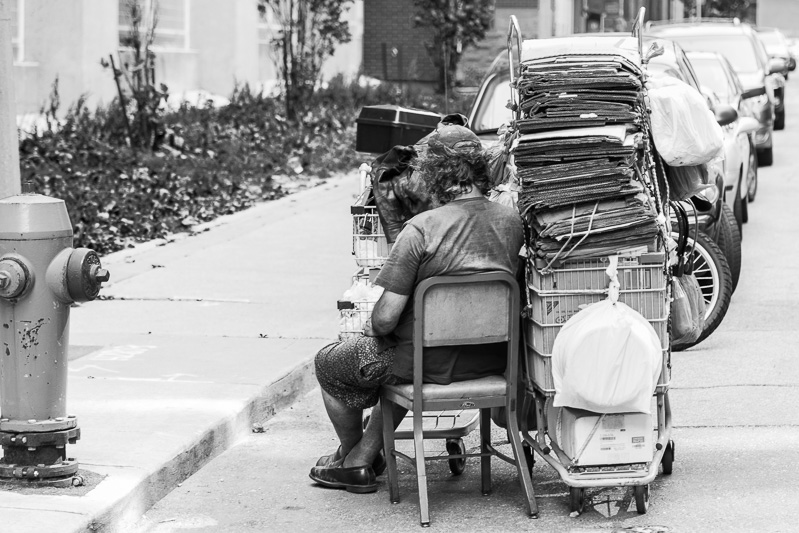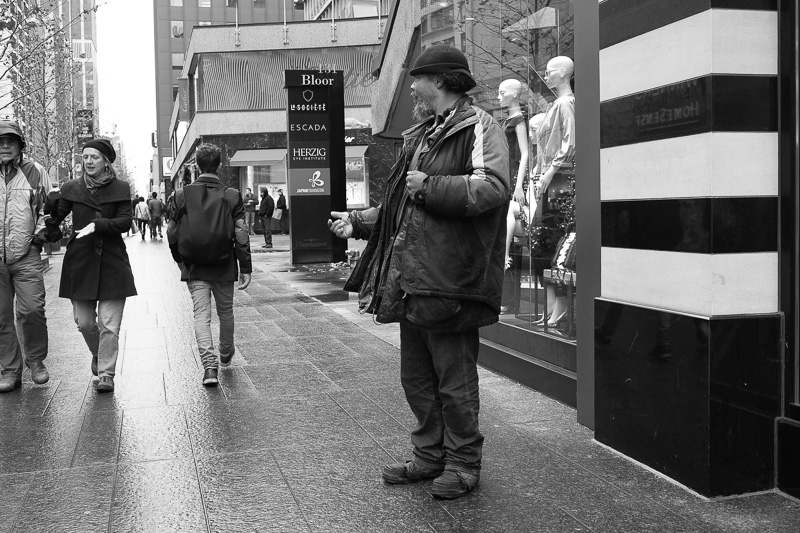A couple years ago, my wife and I sold our house in the suburbs and rented a condo downtown. It was an experiment. We wanted to test a different lifestyle. More evenings out. More amenities. More walking. Less cars. Less big box stores. Less cocooning. There were potential downsides too. More noise. More alienation. More traffic. Less space. Less solitude. Less grass. It’s been a great adventure and we’ve decided to stay downtown. For us, the up sides outweigh the down.
However, the adventure didn’t begin auspiciously. On our first evening after moving in to our rental unit, we went for a walk and came upon an ambulance and police car. They were removing a body from a parkette. The police were talking to a homeless man. We had the impression that this wasn’t a case of foul play. They weren’t questioning the man. They were talking to him as if he had been a friend of the deceased. It was a hot hot summer night. Maybe the heat had been too much for the person who died.

I’d go out each day for a long walk with my dog, and as days became weeks and weeks, months, certain faces became familiar. These weren’t the faces of the rush hour drones flooding into the city from the suburbs and blurring past me by the generic thousands. No. These were the faces of the homeless. Some wouldn’t talk to me. Some were afraid of my dog. But most were happy to talk. Maybe they’d kneel to pet the dog. Or ask questions about her. And this would be the beginning of larger conversations.

I find it ironic that the people who make me feel most at home in the downtown core are the homeless. These are the fixtures of my daily routine. The well-dressed and made-up move like automatons through their regimen of invasion and retreat. They aren’t from here. They don’t really belong here. You can see their discomfort in the way they chafe against their collars and totter on their high heels. You can see their discomfort, too, in the way they turn their eyes away from the outstretched hands that ask for enough to buy a cup of coffee.

I don’t want to romanticize poverty. Some of the people I encounter don’t make me feel at all easy in this space. Sometimes, there’s a man who stands across the street from my building and yells things at the top of his lungs. There’s another who sometimes lies on the front steps to St. Paul’s Anglican Church and yells at no one in particular. Even so, they are a consistent presence. They are the characters that give particularity and humanity to an otherwise generic, pro forma, mass-produced landscape of concrete and asphalt.

We have since moved to what I hope will be a permanent address. Still in the downtown core, we’ve encountered the same thing here that we encountered before — right down to the discovery of a body in the ravine behind our building. Familiar faces stand on the sidewalk while the rest of the world rushes past. Sometimes I don’t see someone who should be standing there. Right there. If I don’t see him for a few days, I begin to worry. What if something’s happened to him? Funny how I don’t have the same attachment to the suits. They’re more like the concrete or the asphalt.